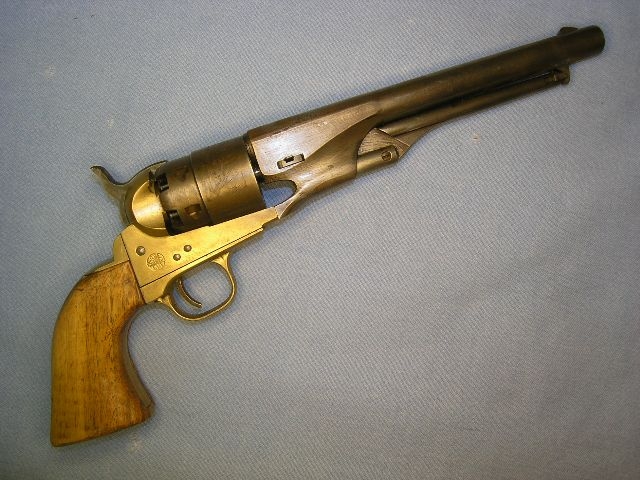
The Rarest WWII US Contract 1911A1 .45 Semi-Auto Pistols: one of the 500 made by Singer Manufacturing Company.
Posted on 08/11/2017 1:52:00 PM PDT by Swordmaker


Estimate: $30,000 - $50,000
Description: Rare and Highly Desirable World War II U.S. Army Singer Manufacturing Company Model 1911A1 Semi-Automatic Pistol
This is a rare example of one of the 500 Model 1911A1 pistols manufactured by the Singer Manufacturing Company during WWII under the Ordnance Educational Order No. W-ORD-396.
Under that contract, the Singer Manufacturing Company produced a total of only 500 pistols. Consequently, they are considered very rare and highly prized by U.S. martial collectors today. It is theorized that almost all of these pistols were issued to the U.S. Army Air Corps, with a very low/limited numbered issued to the U.S. Army.
The consignor states that his father, a member of the 1471st Engineer Maintenance Company during World War II, won this pistol in a poker game played in an abandoned bunker along the bank of the Rhine River and the gun has stayed in his family until being sold at this time. The father’s unit arrived in France aboard the USS Henry Gibbon on January 16, 1945, and while making their way to the front by train, the 1471st was involved in a horrific train accident at the coastal city of Saint-Valery-En-Caux.
This lot includes a photocopy of the history of the train crash that was authored by a member of the 1471st and shows photos of the troop ship that took the 1471st to France and the train crash.
For a true .45 Auto collector, the Singer Manufactured M1911A1 pistol is the Holy Grail of all U.S. Model 1911A1 WWII pistols. It is complete with a WWI US marked leather holster. The back is stamped "WARREN LEATHER/GOODS CO./1918/J.A.D."
Manufacturer: Singer Model: 1911A1 BBL: 5 inch round Stock: Gauge: 45 ACP Finish: blue Grips: plastic Serial Number: S800297 Class: Curio & Relic Handgun Condition: Fine with 40% of the original blue finish remaining overall showing general wear and blue loss. Clear and distinct markings and proofs. The unique grips are very fine condition with nice clear plexiglass showing the two larger "Stars" underneath. While not Singer grips, they are very unique and certainly "one-of-a-kind" and appear to be period installed on the pistol and certainly WWII. Mechanically excellent.
Don't miss the chance for a genuine WWII-issued Singer M1911A1 semi-automatic pistol.
I believe the Walkers had a larger
Cylinder capacity and were being
“Overcharged”.
Thanks Swordmaker.
I have Exactly the same pistol in my lap,,
Have yet to shoot it.
It weighs 6 pounds!
It’s definitely a Colt, a little holster wear around the muzzle but the finish and bore both look good and the grips are original. Thanks for the help.
Certainly a collectable. A Singer!
Have yet to shoot it.
It weighs 6 pounds!
When you get around to it, try 40 or 50 grains max of black powder in each chamber topped off with .454 round ball. It'll hold 60 grains, but that is quite punishing to the wedge (the little bar that holds the barrel and frame together) and your wrist.
Up that value to at least $1800. . . probably more. Depending on the finish on the grips, trigger, and hammer, could be lots more.
That was the exact problem with the original Walkers and why there are so few surviving examples of what should have been a robust gun. Iffy steel content (too much carbon, not enough iron in old steel) resulted in catastrophic failures if the cylinder was overloaded with black powder and then a ball was crammed in compressing the powder. The recommended load was essentially the same as for the later 1860 Army Colt: 35 grains max. Some were cramming up to 60 grains in the Walker merely because the cylinder would hold that much. Modern Walkers with modern steel can handle up to 50 grains of black powder safely. I would still not use 60 grains due to the likelyhood of cross cylinder discharges which is far more likely when the cylinders are overloaded.
Shoots great to this day but my Dad had it milled to put on adjustable sights back in the '50s - reduced it's value from $10K (about) to somewhere around $7K but it will never go for sale - generational hand-me-down.
Won a few competitions with it over the years. Still have the two-tone magazines it came with.
I heard of people at railroad depots kicking boxes aside when the US Army was shipping 1911’s, also.
And cross cylinder discharges are no joke. As you know lubing can help a bit to prevent this.
Chainfire .. I believe...
Is the term.
CRISCO grease is commonly use to
Prevent that. Liberally used to
Seal over the compressed Ball.
Yes you are right... Both terms have been used. Ever had it happen? :) I did only one time because I did not take the time to grease my loads. I was very lucky because I was firing an 1861 navy colt reproduction. It just happens to have tapered relief indentations on both sides to let the ball come out unrestricted yet deflect it away on the side it happened. Never really thought about the frame design shape until that happened. :)
 Notice even at the bottom there is room for the ball to at least exit the chamber.
Notice even at the bottom there is room for the ball to at least exit the chamber.
Interesting...
Engineering 160 years ago
Must have been Exciting!
Never experienced a chainfire.
Exquisite photo!
Disclaimer: Opinions posted on Free Republic are those of the individual posters and do not necessarily represent the opinion of Free Republic or its management. All materials posted herein are protected by copyright law and the exemption for fair use of copyrighted works.